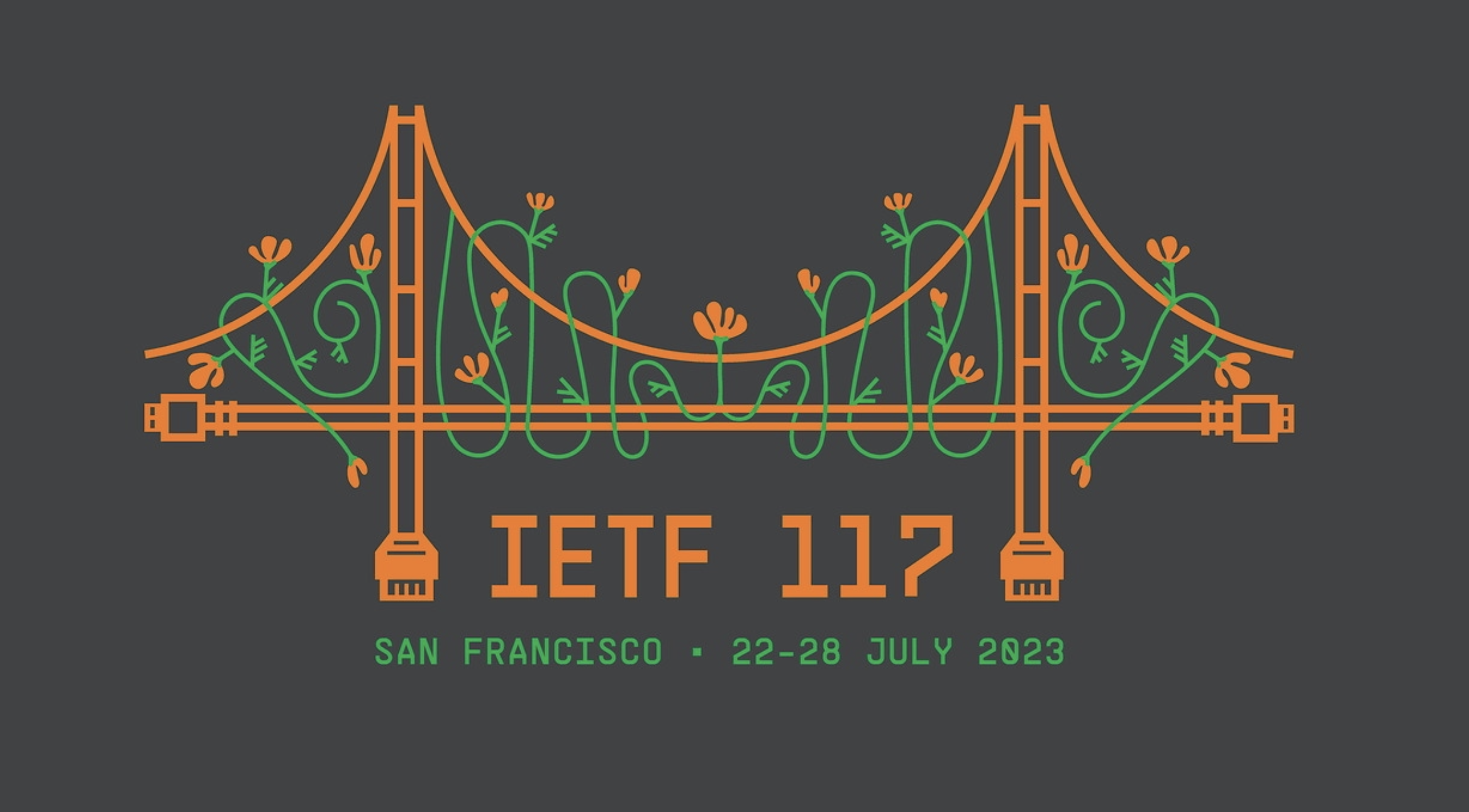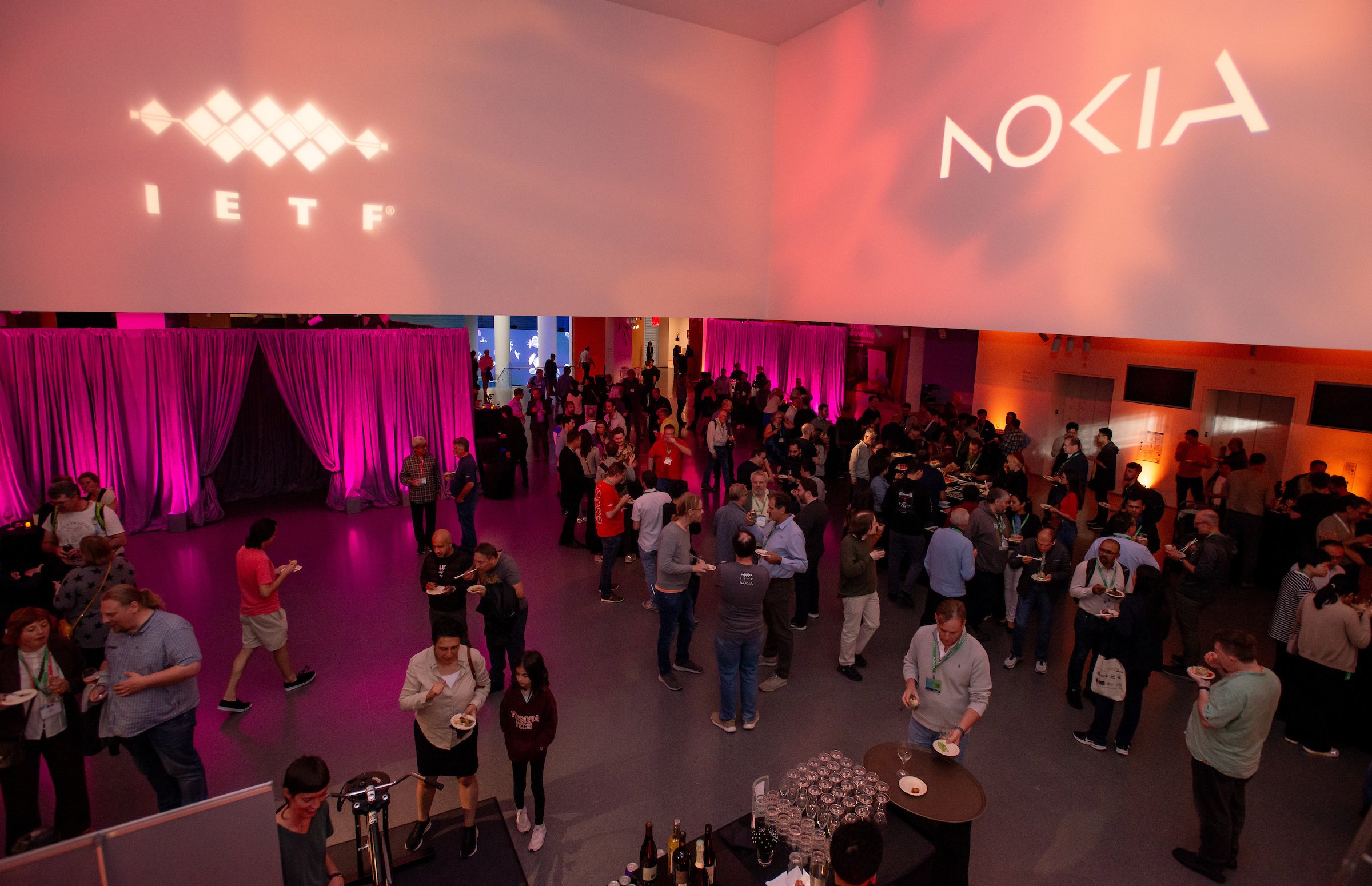Filter by topic and date
IETF 117 Highlights
- Dhruv Dhody IAB Member and liaison to the IESG
21 Aug 2023
IETF 117 is a few weeks behind us and this time I took the opportunity to report on a few highlights and some of my impressions.
Disclaimer: With parallel tracks, it is not possible to cover everything that happened during the IETF week. Some of the Internet Engineering Steering Group (IESG) and Internet Architecture Board (IAB) members have provided inputs but It is likely that we missed several things. Do check out tips about catching up on IETF 117 with recordings and minutes of the meeting. I did the same for some of the sessions that I missed and I still have a few on my queue 🙂.

As a current IAB member who is also a liaison to the IESG, I take the opportunity to summarize my impressions of the IETF meeting week. The IETF week can be tiring, but adding Sunday leadership meetings, early morning breakfast sessions as well as Friday wrapup, makes the week way longer. At the same time being part of the leadership exposes you to the corners of the internet technologies and workings of the IETF that you had earlier not paid attention to. These leadership meetings make the IETF week productive by flagging topics of interest that need cross-area attention and cooperation between the leadership bodies. These face-to-face meetings are crucial to make progress on pending matters as well. Overall, it is an enriching experience and I am enjoying it. I hope to see a more diverse pool of candidates for leadership positions in this Nominating Committee (NomCom) cycle. The call for nominations (including self-nomination) is open.
IETF 117 saw 1579 participants with 905 on-site in San Francisco and 674 participating remotely. The IETF Hackathon on the weekend continues to see active participation and showcases the commitment to running code in the standardization process at the IETF. The July IETF meeting also has the Applied Networking Research Workshop (ANRW) co-located and jointly organized by ACM and the Internet Research Task Force (IRTF).
Birds of Feather sessions (BOFs) are initial discussions about a particular topic of interest to the IETF community. This time we had a Detecting Unwanted Location Trackers (DULT) BoF that focused on the security and privacy implications of location-tracking accessories when misused. The goal of a BOF is to demonstrate that there is a problem that needs solving and that IETF is the right place to attempt to solve it. I left with the feeling that there is good support to work on this problem, though the proposed charter needs a broader scope. Initially, there was another BOF session planned for Key Transparency (KEYTRANS) for providing verifiability for identity-to-public-key bindings, which was later canceled as the group showcased consensus on the proposed charter text on the mailing list. The proposed working group (WG) is currently under IESG evaluation.
There were some newly formed WGs that met for the very first time:
- BPF is a technology that can run programs in a privileged context, such as an operating system kernel to safely and efficiently extend the capabilities of the kernel without requiring to change kernel source code or load kernel modules. BPF is widely deployed on operating systems, such as Linux and Microsoft Windows, and is also implemented in some network interface cards. The meeting focused on adopting the Instruction Set Verification draft as well as a discussion on the Extension Policy for the BPF Instruction Set Architecture (ISA).
- Congestion Control Working Group (CCWG) is looking at the impediments to congestion control work occurring in the IETF and can generalize transports from TCP to all of the relevant transport protocols. The group discussed the update to RFC5033 as well as guidelines for congestion control at endpoints.
- Network Inventory YANG (IVY) is working on common building blocks for network inventory modeling. There were various initial proposals discussed and the group is figuring out how to organize and plan to hold interim meetings to keep the energy.
- Machine Learning for Audio Coding (MLCODEC) is improving the Opus codec and saw extension proposals as part of its first meeting.
Here are a few highlights from other WG and research group (RG) sessions:
- Inter-Domain Routing (IDR) is nearing completion of the two experimental intent-aware colour-based routing proposals (CAR and CT). There was also an interesting presentation on running BGP over QUIC.
- MAC Address Device Identification for Network and Application Services (MADINAS) saw a proposal about OpenRoaming as well as interesting test results by Warren Kumari.
- Usable Formal Methods Proposed Research Group (UFMRG) discussed using IMAP as a sample problem for this proposed RG.
- Source Packet Routing in Networking (SPRING) made progress on Compressed SRv6 Segment List Encoding in SRH
- Path Computation Element (PCE) (which I co-chair) continues to see Segment Routing based extensions, they also discussed a proposed recharter.
- Global Access to the Internet for All (GAIA) RG saw some interesting talks on Everest community networks and local content in Africa.
- Decentralized Internet Infrastructure (DINRG) recently rechartered and now focuses on the implication of centralization on the Internet. There were multiple interesting talks including one by Cory Doctorow calling to “let the platforms burn”.
- Internet Area Working Group (INTAREA) saw a proposal and lively discussion for defining a new EtherType for SRv6 and revived work on Provisioning Domains for proxy discovery.
- Benchmarking Methodology (BMWG) had an interesting proposal looking at integrated space and terrestrial networks benchmarking methodology.
- Human Rights Protocol Considerations (HRPC) RG continues to bring interesting talks, this time we had three talks on digital authoritarianism by Steven Feldstein, Internet fragmentation by John Heidemann, and Reflections on Ten Years Past The Snowden Revelations by Stephen Farrell.
- Network Management (NMRG) had an interesting discussion on Network Digital Twin and possible future activities for the RG.
- Domain Name System Operations (DNSOP) saw a shift in focus towards more maintenance and update. This blog post from Geoff Huston goes into detail about what’s happening in the WG.
The IETF Plenary included a touching memorial for John Leslie and Al Morton. John was passionate about openness in the IETF leadership. Al was an active, friendly and very approachable person. We will miss both of them! The IESG and IETF Administration LLC open mic sessions had a discussion on diversity, outreach, and funding which continues to be important topics worthy of longer discussions which are still ongoing on multiple mailing lists. EODIR is planning to continue this conversation as part of an upcoming interim meeting.
The IAB Open session had a very interesting talk by Nick Merrill on Fragmentation & centralization. The IAB received feedback on the proposed program on identity systems with discussion ongoing in the mailing list.
The Internet Engineering and Planning Group (IEPG) meets before each IETF meeting with a focus on Internet operations and is a great venue for discussions for network operators. In recent times, IPv6 extension header testing continues to be a topic of some interest. There was an interesting presentation on a roadmap for securing BGP.
It is not all work during the IETF week, there are various social networking opportunities such as new participant’s quick connections events, Hackdemo, new participants happy hour, welcome reception, and the IETF social event, which was organized thanks to IETF meeting host Nokia! It was great to get Pecha Kucha back.

While plenary meetings, including the upcoming IETF 118 Prague scheduled for 4-11 November, are important as a level set and making progress on pending issues, the work continues to happen on the IETF mailing list. So, see you there…